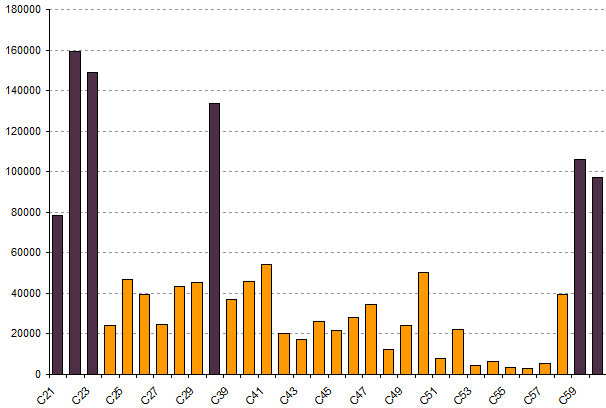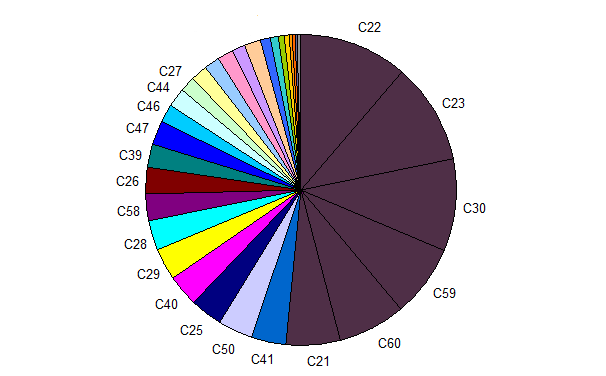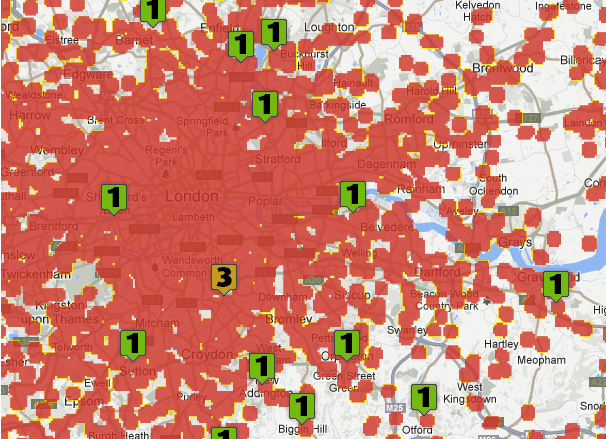Improving the 4G-at-800 information on UK Free TV
 Brian Butterworth published on UK Free TV
Brian Butterworth published on UK Free TV I have been reviewing the Ofcom document: "Technical analysis of interference from mobile base stations in the 800 MHz band to digital terrestrial television - Further modelling" and have made some changes based on the prediction model evidence.
Looking page 42, where the 4g-at-800 effects of four cases - I have compared the "consumer mitigation and network mitigation" values with the "mobile mitigation only" and produced this graph:

This shows that, once the network filters ("network mitigation") are taken into account, the channels that require the fitting of a filter in the home are C22, C23, C30, C59, C60 and C21.
You can see from this pie chart:

... that these six channels (out of 40) supply over half of the potential problems.
I have therefore changed the site to now call these the "higher risk range", and highlight these on the transmitter pages. Like this:

This means that the Freeview interference from 800Mhz 4G 2013 - map page now appears like the image below. The red areas are those within 1km of a existing mobile phone mast, the numbers showing the number of multiplexes in the "higher risk range".

I may move to a points-based risk system in future.
Your comments would, as always, be appreciated.
1:51 PM
ed: Freeview should really refer to the schedule of programmes as 'services' rather than 'channels'.
The system used for digital TV delivers between 24 and 40.8 megabits per second of capacity for an 8 MHz block of radio spectrum, which is what we mean when we say 'channel' here. The channels are numbered according to the lower and upper limits of the block of spectrum, from C21 at 470-478 MHz up to C69 at 854-862 MHz.
That amount of capacity, per radio channel, is far more than any one service needs, so a number of services are bundled together into a 'multiplex'. The multiplex alternately takes a block of data from each service so that each service has the same approximate rate of data arriving. Different services are compressed by different amounts, different broadcasters having made different trade-offs between capacity and quality.
There are three Public Service Broadcasting (PSB) multiplexes, transmitted from all 1100 transmitters in the British Isles. There are also three Commercial multiplexes transmitted from 80 of the largest sites (those covering the largest part of the population). The multiplexes and their content are listed at Multiplexes | ukfree.tv - 10 years of independent, free digital TV advice .
Also, many services actually share their capacity over the day. So, for example, the same capacity is used to broadcast CBeebies (6am - 7pm) and BBC Four (7pm to 6am, approx). Some of the commercial multiplexes have up to four different services time-sharing the same slot.
| link to this comment |